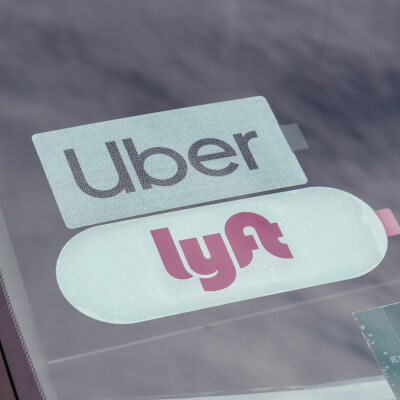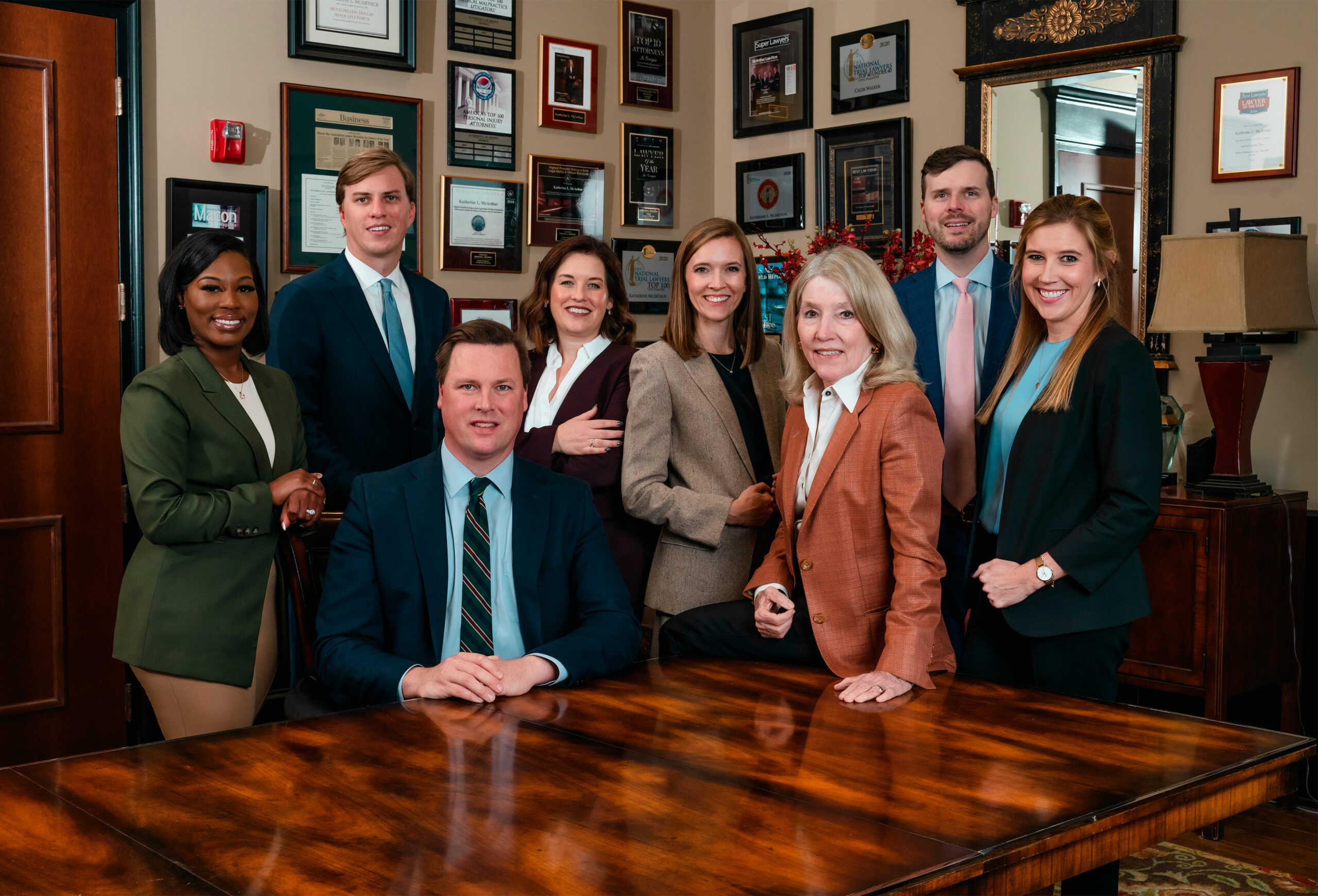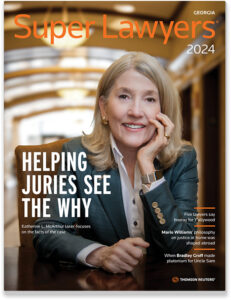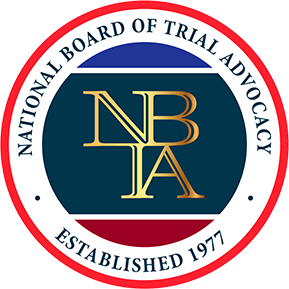Here at McArthur Law Firm, we have committed ourselves to helping injured people throughout Central Georgia. If you have been injured in an accident involving a taxi or rideshare arrangement such as Uber or Lyft, we make seeking justice and maximizing your compensation our goal.
Rideshare services like Uber and Lyft offer convenience—but when accidents occur, the consequences can be serious. Victims may suffer severe injuries and face a complex legal landscape involving multiple insurance companies and corporate policies.
Individuals injured in a rideshare crash—whether as passengers, pedestrians, or other drivers—need a Georgia attorney who understands both state law and the unique challenges of rideshare claims. From denied insurance coverage to unclear liability, these cases demand strategic legal guidance.
Georgia Rideshare Accident Lawyer
Here at McArthur Law Firm, we have committed ourselves to helping injured people throughout Central Georgia. If you have been injured in an accident involving a taxi or rideshare arrangement such as Uber or Lyft, we make seeking justice and maximizing your compensation our goal.
McArthur Law Firm has experience handling rideshare and other car accident cases throughout Georgia, including in Atlanta, Macon, and Warner Robins. This firm understands how to fight effectively for your right to compensation.
McArthur Law Firm serves Fulton County, Bibb County and Fulton County, as well as Clayton County, Cherokee County, Forsyth County, and other counties in Georgia. For more information about the McArthur Law Firm or to set up a free consultation to learn what we may be able to do to help you with your personal injury case, give us a call at one of our offices in Georgia or fill out our online contact form.
- Atlanta Office: 404-565-1621
- Macon Office: 478-238-6600
- Warner Robins: (478) 551-9901
Overview of Rideshare Accident Cases
- Major Types of Georgia Rideshare Accidents
- Injuries Caused by Georgia Rideshare Accidents
- Hotspots for Rideshare Accidents
- Who is Liable for a Georgia Rideshare Accident
- Frequently Asked Questions
- Additional Resources
Major Types of Georgia Rideshare Accidents

One common type of accident occurs when the rideshare driver collides with another vehicle. This often results from speeding, distracted driving, or failing to obey traffic signals. These incidents frequently happen while the driver is actively transporting passengers or searching for a pickup.
When Another Driver Hits a Rideshare Car
Accidents can also occur when a third-party driver crashes into a rideshare vehicle. Even if the rideshare driver is not at fault, passengers may still experience confusion about how to report the accident or seek compensation.
Pedestrian or Cyclist Hit by a Rideshare Vehicle
Pedestrians and cyclists are sometimes struck by rideshare drivers, particularly during pickups and drop-offs. These accidents often occur because the driver is distracted or unfamiliar with the area, increasing risk to vulnerable road users.
Single-Vehicle Rideshare Crashes
Not all rideshare accidents involve multiple vehicles. Sometimes, a rideshare car crashes into a barrier, curb, or stationary object. These can be caused by driver fatigue, distraction, or poor weather conditions, yet passengers may still suffer serious harm.
Getting Hurt While Entering or Exiting the Vehicle
Accidents sometimes happen as passengers are getting into or out of the vehicle. Drivers who stop in unsafe locations or on uneven surfaces can inadvertently create conditions that lead to falls or collisions with other cars.
Driver Distraction or Fatigue
Rideshare drivers often work long hours and may be distracted by app notifications or GPS. Drowsiness or inattention increases the risk of crashes, especially in high-traffic areas or late-night shifts.
Speeding or Breaking Traffic Laws
Some drivers engage in risky behavior such as speeding, running red lights, or aggressive lane changes to complete trips faster. These actions can result in serious accidents that are preventable.
Drunk or Drugged Driving by Rideshare Drivers
Although uncommon, some rideshare drivers operate under the influence of alcohol or drugs. These situations are particularly dangerous and often involve severe injuries or fatalities.
Multi-Car Pileups Involving Rideshare Vehicles
In dense urban areas, chain-reaction collisions are more likely. Rideshare vehicles caught in such pileups may be involved as secondary or tertiary impacts, making it more difficult to determine the sequence of events and the extent of passenger injuries.
Injuries Caused by Georgia Rideshare Accidents
Neck and Back Injuries From Sudden Stops or Turns
Sudden maneuvers—like sharp turns or abrupt braking—can strain the neck and spine, resulting in whiplash, herniated discs, or long-term spinal issues.
Soft Tissue Injuries From Tight Spaces
The interior of smaller vehicles can contribute to bruises, sprains, and muscle tears when passengers are thrown against hard surfaces during a crash.
Injuries From Entering or Exiting the Car
Unsafe stops can lead to injuries before or after the ride. Tripping over a curb, stepping into oncoming traffic, or falling due to poor lighting are all common hazards during pick-up or drop-off.
Facial Injuries From Interior Impact
Without seat belts or airbags directly in front, rideshare passengers may strike their faces against dashboards, windows, or seats. This can cause broken noses, dental injuries, or facial lacerations.
Psychological Trauma and Fear of Using Rideshare Again
Emotional injuries—like anxiety, PTSD, or travel-related phobias—are frequently reported after rideshare crashes and may interfere with daily activities.
Worsening of Pre-Existing Conditions
Even minor crashes can aggravate existing medical issues, turning manageable conditions into serious health problems. Victims may experience greater pain, increased treatment needs, or loss of mobility.
Hotspots for Rideshare Accidents
Rideshare accidents can happen anywhere, but some areas in Georgia are more likely to see them because of high traffic, busy nightlife, and frequent use of Uber and Lyft. Cities like Atlanta, Macon, and Warner Robins have specific hotspots where rideshare crashes are more common. Knowing where these accidents tend to happen can help victims recognize risks and understand what to expect if they’ve been involved in one.
In Atlanta, rideshare accidents are especially common in areas like Midtown, Buckhead, and downtown. Peachtree Street, Ponce de Leon Avenue, and intersections near major attractions like State Farm Arena and Mercedes-Benz Stadium are all high-risk zones. Accidents often happen late at night when people are leaving bars, clubs, or concerts. The I-75/I-85 Connector and I-285 also see a large number of rideshare-related crashes due to fast speeds, lane changes, and merging traffic. The area around Hartsfield-Jackson Atlanta International Airport is another hotspot, especially in rideshare pickup and drop-off zones.
In Macon, rideshare accidents frequently occur along the I-75 corridor, near Mercer University, and downtown on streets like Cherry Street and Poplar Street. Accidents are common when bars and restaurants close or when there are events at the Macon Coliseum or Atrium Health Amphitheater. Drivers who are unfamiliar with downtown routes may stop abruptly or make last-second turns, putting passengers and other drivers at risk.
In Warner Robins, rideshare crashes are more likely near Robins Air Force Base, especially during shift changes or military events. Watson Boulevard, Russell Parkway, and Houston Lake Road are busy streets where Uber and Lyft drivers often pick up and drop off passengers. Shopping centers, hotels, and restaurants in these areas attract a lot of rideshare traffic, which can lead to crashes—especially when visibility is low or traffic is heavy.
Who is Liable for a Georgia Rideshare Accident
When the Rideshare Driver Is at Fault
If the rideshare driver caused the crash by speeding, texting, running a red light, or otherwise driving carelessly, they may be personally liable. Georgia’s general negligence law, O.C.G.A. § 51-1-6, states that someone who violates a duty of care and causes harm can be held financially responsible. However, who pays for the damages depends on whether the rideshare app was on and the driver was actively working.
Under O.C.G.A. § 33-1-24, rideshare drivers must carry higher insurance coverage when they are logged into the app. If the driver is online but has not accepted a ride, the required coverage is at least $50,000 per person and $100,000 per accident for bodily injury, plus $25,000 for property damage. Once the driver accepts a ride or is actively transporting a passenger, coverage increases to $1 million in liability.
When Another Driver Causes the Crash
If a different driver causes the accident, their insurance is usually the first source of compensation. In that case, the victim may file a claim against the at-fault driver’s insurance policy. But if that driver doesn’t have enough insurance or flees the scene, Uber or Lyft may provide uninsured or underinsured motorist coverage—but only if the rideshare app was active during the ride. This coverage is also governed by O.C.G.A. § 33-1-24, which sets the insurance rules for rideshare networks.
When the Rideshare Company May Be Liable
Uber and Lyft generally classify their drivers as independent contractors, not employees. This limits the company’s direct legal responsibility in most cases. However, if the company failed to conduct a proper background check or allowed a dangerous driver to stay on the platform, it may be held liable for negligent hiring or retention. In Georgia, holding the company itself accountable usually requires showing a pattern of misconduct or that the company ignored warning signs.
When Other Parties May Be Liable
In some cases, other parties may share responsibility. For example, a government entity may be liable for a poorly designed intersection or lack of traffic signs. A vehicle manufacturer may be responsible for a defect that contributed to the crash. Each potential claim must be evaluated based on facts, and further analysis may be needed to determine who can be held liable under Georgia law.
Comparative Fault and Shared Liability
Georgia follows a comparative fault rule under O.C.G.A. § 51-12-33. This means that if more than one party shares blame for the crash, a victim can still recover damages—as long as they are less than 50% at fault. However, their recovery will be reduced by their percentage of fault. This rule often comes into play in rideshare cases where multiple vehicles are involved or the passenger wasn’t wearing a seatbelt.
Each accident is different, and liability must be evaluated based on how the crash occurred, who was involved, and what insurance applies. An experienced personal injury attorney can help navigate these laws and determine the best way to pursue compensation.
Frequently Asked Questions
Should Uber or the driver be sued after an accident?
It depends on the circumstances. Uber’s insurance typically applies only if the driver was actively using the app at the time of the crash.
Can a passenger receive compensation after an accident?
Yes. Passengers are generally eligible to file a claim for injuries, regardless of who was at fault for the crash.
What happens if another driver caused the accident?
A claim may be filed against the at-fault driver’s insurance. If that driver is uninsured, Uber’s insurance may provide coverage.
What is the deadline for filing a claim?
Claims must be filed within two years from the date of the accident, in accordance with O.C.G.A. § 9-3-33.
Is it necessary to call the police after a rideshare accident?
Yes. Filing a police report is essential to document what happened and identify those involved.
Is Uber’s insurance the same as regular car insurance?
No. Uber’s coverage varies based on the driver’s app status—whether they were online or had accepted a ride at the time.
What if injuries were not felt until later?
It is crucial to see a doctor immediately. Delayed symptoms are common and may still be included in the injury claim.
Can compensation still be received if the injured person wasn’t wearing a seat belt?
Possibly. Under Georgia’s comparative fault rule, compensation may be reduced but is not automatically denied.
Does it make sense to hire a lawyer for a rideshare accident claim?
Yes. These claims can be complicated due to the involvement of multiple insurance policies and legal considerations.
What if the Uber driver fled the scene?
If the driver left the scene, the incident might be considered a hit-and-run. It should be reported immediately, and legal assistance should be sought to explore uninsured motorist coverage.
Additional Resources
CDC: Ridesharing and Motor Vehicle Crashes – This CDC study looks at how rideshare services like Uber and Lyft may affect motor vehicle crashes in New York City. It analyzes data from 2017 and 2018 and finds that more rideshare trips are linked to higher odds of injury-related crashes, especially those involving motorists and pedestrians.
National Library of Medicine: Ride-Hailing and Road Traffic Crashes – This academic article reviews many studies on how ride-hailing affects road crash rates and outcomes. It presents theories and methods used in past research and explains why findings have varied. It also points out gaps in the research and suggests directions for future studies. The article focuses on different crash types, user groups, and environmental factors that may influence crash risk in relation to ride-hailing.
One-Third of Ride-Share Drivers Have Had a Crash on the Job, Survey Finds (UIC) – This source from the University of Illinois Chicago discusses a study that found one-third of surveyed rideshare drivers have been in a crash while working. It explains contributing factors such as cellphone use, fatigue, and difficult passengers. The article also mentions plans for future research and possible improvements to working conditions that could enhance safety for both drivers and passengers.
Auto Insurance Maintained by Uber – This page explains how Uber provides auto insurance coverage for its drivers and delivery partners. It outlines when insurance applies, what it covers, and how drivers are supported in case of a crash. It also details how the insurance coverage changes depending on whether the app is on, a trip is in progress, or a driver is waiting for a request.
Insurance Coverage While Driving With Lyft – This page from Lyft describes the insurance policies in place for drivers, depending on whether the app is on or off, and whether a ride is in progress. It details liability coverage, collision coverage, and other insurance types like uninsured motorist coverage. It also explains what happens in the event of an incident and what drivers need to know about personal and commercial insurance requirements.
Hire a Lawyer for Rideshare Accidents in Bibb County, Georgia
McArthur Law Firm serves Fulton County, Bibb County and Fulton County, as well as Clayton County, Cherokee County, Forsyth County, and other counties in Georgia. For more information about the McArthur Law Firm or to set up a free consultation to learn what we may be able to do to help you with your personal injury case, give us a call at one of our offices in Georgia or fill out our online contact form.
- Atlanta Office: 404-565-1621
- Macon Office: 478-238-6600
- Warner Robins: 478-551-9901







